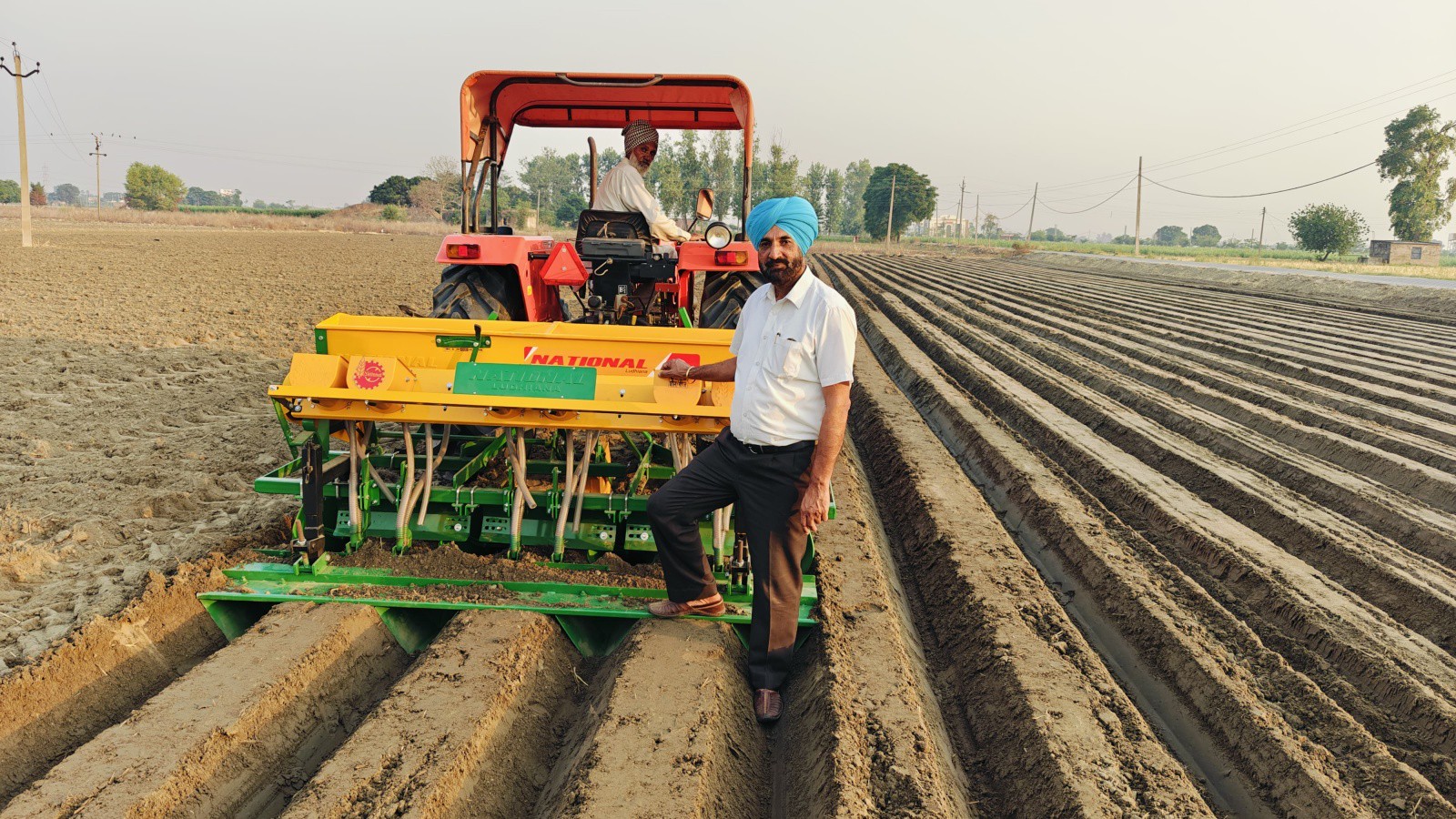Former IAS officer Kahan Singh Pannu with the paddy seeder developed by him. (Express)
Four years after retiring from the Indian Administrative Service (IAS), Kahan Singh Pannu has become a farmer.
He is conducting research in his fields on how to grow paddy without puddling, using a technique called Seeding of Rice on Beds (SRB). He has even invented a machine to assist with this method and is encouraging other farmers to adopt it to help conserve precious underground water.
Pannu, 64, who retired in September 2020, now manages 17 acre of farmland in Jai Nagar village, Patiala. Initially, on one acre of land, he successfully grew paddy using the Seeding of Rice on Beds (SRB) technique, achieving a yield of 26.5 quintals per acre-equivalent to yields from larger fields where traditional flooding methods are used.
To support this method, Pannu collaborated with National Agricultural Implements in Ludhiana to develop a machine that can create beds and plant seeds. “After three prototypes, they succeeded, producing a machine that cost Rs 1 lakh and can plant seeds across 7-8 acre of land daily. This technique uses 3.5 kg of seeds per acre, compared to 8 kg for traditional sowing. The Indian Agricultural Research Institute (IARI) and a private seed company have developed herbicide-resistant varieties suited to this method,” Pannu said.
He noted that other farmers, using this SRB method across 12 locations, achieved yields comparable to conventional paddy fields. Pannu said, “They have also been able to save Rs 5,000 on labour for transplantation of paddy and Rs 2,000 on puddling. The water saved is priceless. I have now requested Punjab Agricultural University (PAU) to run field trials so that we can tell the farmers to pick this method.”
Highlighting the urgency of water conservation, Pannu said, “Water scarcity is a critical issue that should be emphasized in schools, educational institutions, and among farmers. Research and extension efforts should focus on water conservation. Traditional paddy sowing, especially puddling, is incredibly water-intensive, which is unsustainable.”
Before implementing the SRB technique, Pannu consulted Dr G S Khush, known as the “Father of the Rice Revolution”, and economist Dr S S Johl. Sharing his successful results, he reported that Dr Khush was initially sceptical about the compatibility of combine harvesters with bed sowing but was reassured when he worked without extra modification. Dr Johl also congratulated him on the achievement.
Pannu warned of a looming environmental crisis in Punjab due to the falling groundwater table, predicting that groundwater might deplete to a depth of 1,000 feet within the next 15 years. The primary cause is the cultivation of water-intensive paddy during the hot summer months, where one kilogram of rice requires approximately 5,000 litre of water using traditional methods. In contrast, SRB requires only about 25 per cent of the water needed for conventional puddling.
He also emphasized that SRB does not require standing water, thereby reducing methane emissions. Additionally, the open soil structure enhances rainwater absorption and fosters beneficial soil microbes. This technique, which costs relatively little, is accessible for village cooperatives, agro-service centres, and large-scale rice cultivators.
Pannu has a history of advocating for sustainable agriculture. He was involved in drafting the Punjab Preservation of Subsoil Water Act of 2009, which restricts paddy transplantation before June 10, and introduced laser levelling in Punjab in 2010, saving 25 per cent of water used in rice cultivation. He considers SRB an improvement over the Direct Sowing of Rice (DSR) method, as it requires even less water.
As an alumnus of the PAU and former Secretary of Agriculture for the Punjab government, Pannu explained that SRB involves planting paddy on raised beds of 22 inches in width, with two rows of seeds per bed and 12-inch-wide furrows between beds for water. This allows plants to access moisture without the need for standing water, promoting optimal growth with adequate air, light, and space.
